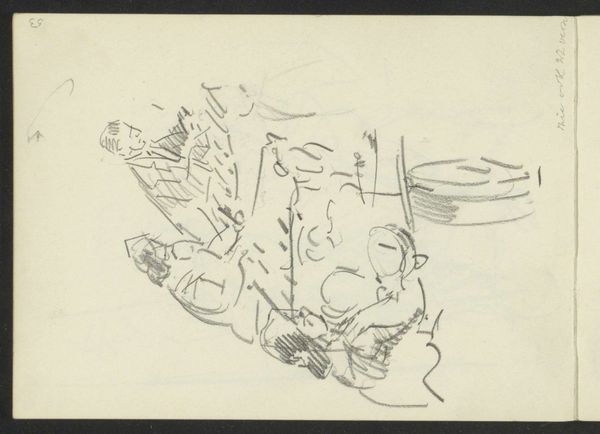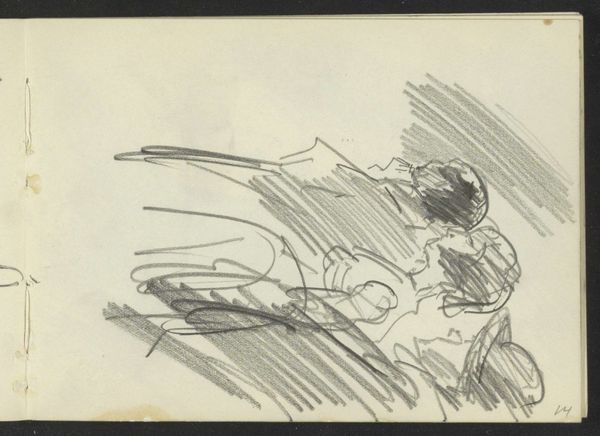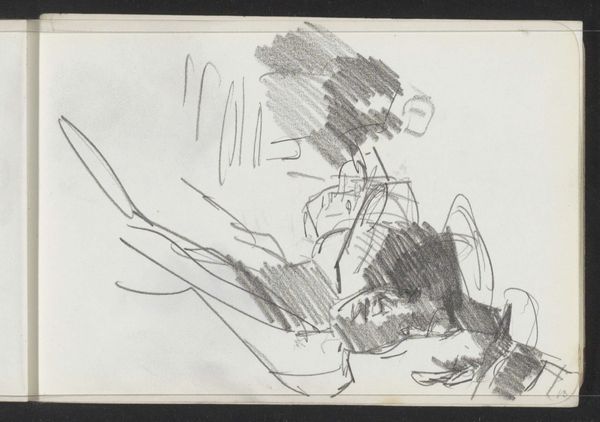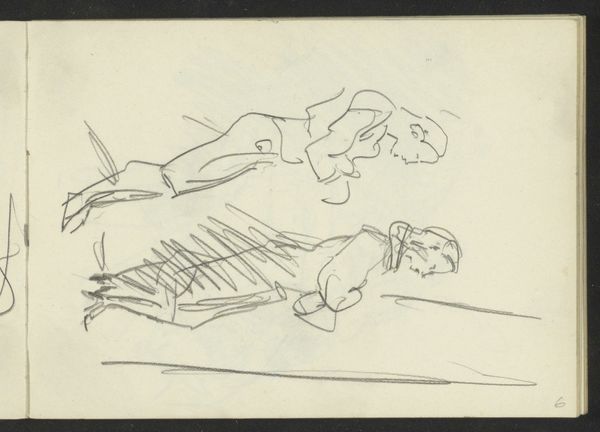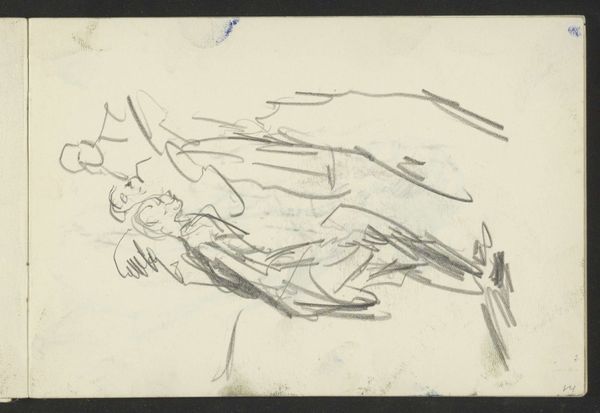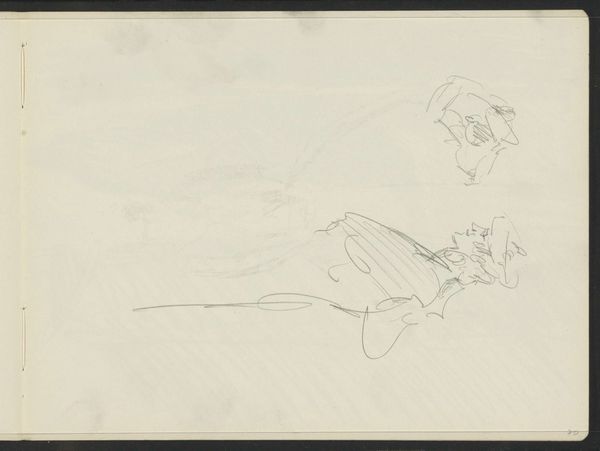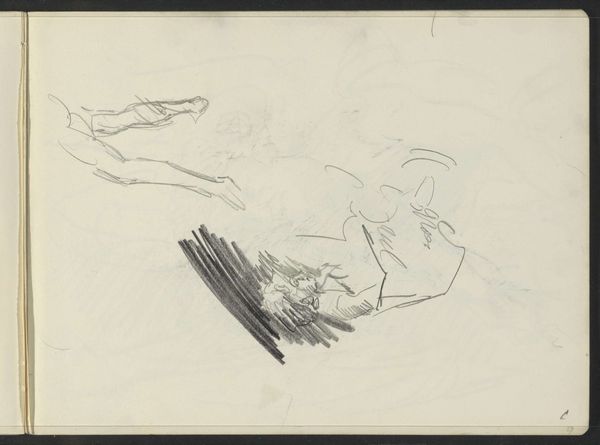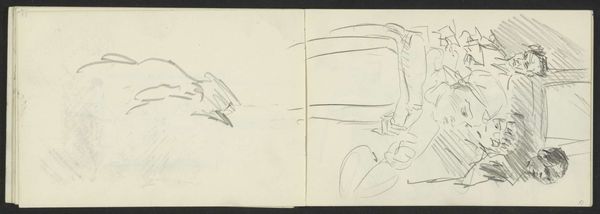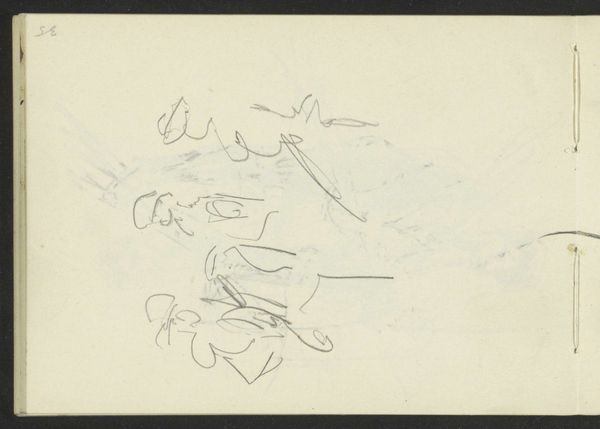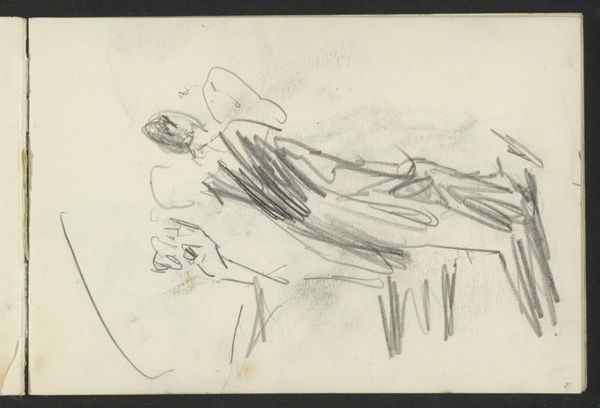
Copyright: Rijks Museum: Open Domain
Curator: My eye is immediately drawn to the heavy shading and sparse lines. It feels fragmented, almost fleeting, like a captured moment. Editor: Indeed. Here we have "Figuren op een terras" by Isaac Israels, a drawing held in the Rijksmuseum, thought to originate between 1875 and 1934. It's a pencil sketch, typical of Israels’ impressionistic style, showing figures seemingly in a terrace setting. Curator: Impressionistic is the right word. There’s an ambiguity here that's compelling. The figures are mere suggestions, less about detailed likeness and more about the gesture, the social energy, and maybe the symbolism of leisure. Editor: Absolutely, the rapid, sketchy lines, characteristic of his working method, were designed to capture the vibrancy of modern life. This piece reminds us that societal depictions and art are shaped by immediacy, capturing what’s culturally valuable to portray at that given moment in history. Curator: It’s a visual shorthand. Look how little detail is given to their faces. The artist invites us to complete the narrative, doesn’t he? What are they talking about? Who are they? Editor: Perhaps that’s precisely the point. Israels’s art often focused on the fleeting impressions of contemporary life, the democratization of social experience – not to portray individuals but to encapsulate the modern zeitgeist. Curator: So, in essence, these anonymous figures symbolize broader societal shifts towards accessible leisure activities. What resonates profoundly, for me, is how even the most seemingly spontaneous sketch reveals an insightful narrative of social life at that time. It’s more than just technique; it's a cultural artifact, ripe with implicit social meanings that shape how we, as audiences, read it. Editor: A vital reminder that art carries historical weight, revealing cultural values and ideological frameworks across the ages. I like your point about how his choices influence reception and what social meanings are being highlighted by its aesthetic qualities. Curator: Yes, an artist’s decisions, however spontaneous they may appear, are inextricably tied to the symbols and ideas present within their specific culture, reflecting them in the composition itself. Editor: It leaves us to consider the evolving public perception of art – its capacity not only to document moments, but to influence and codify society itself.
Comments
No comments
Be the first to comment and join the conversation on the ultimate creative platform.

